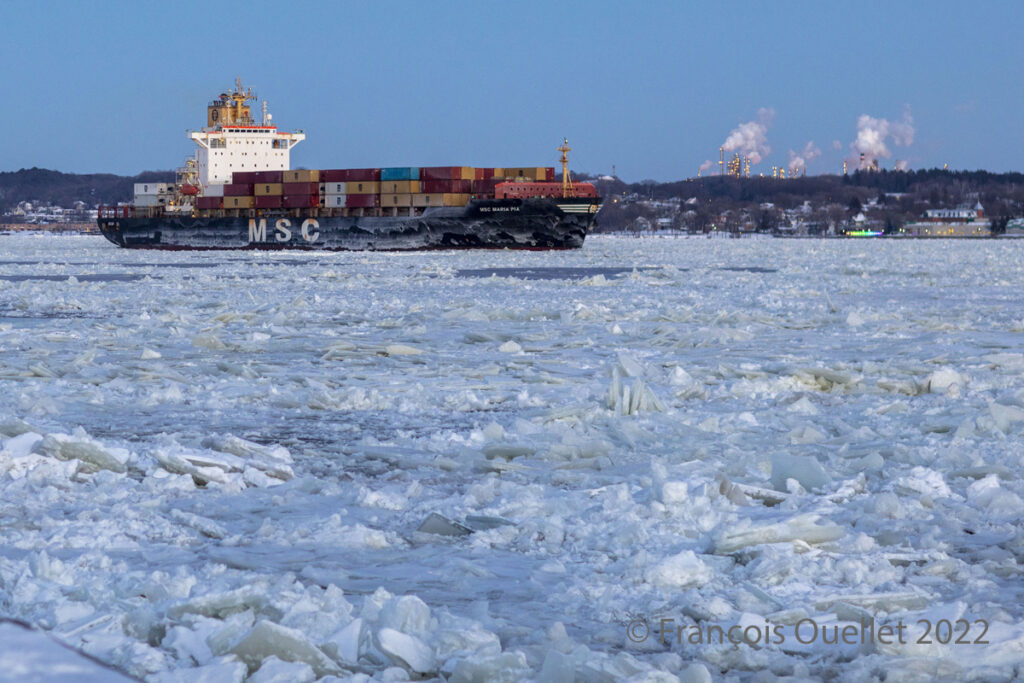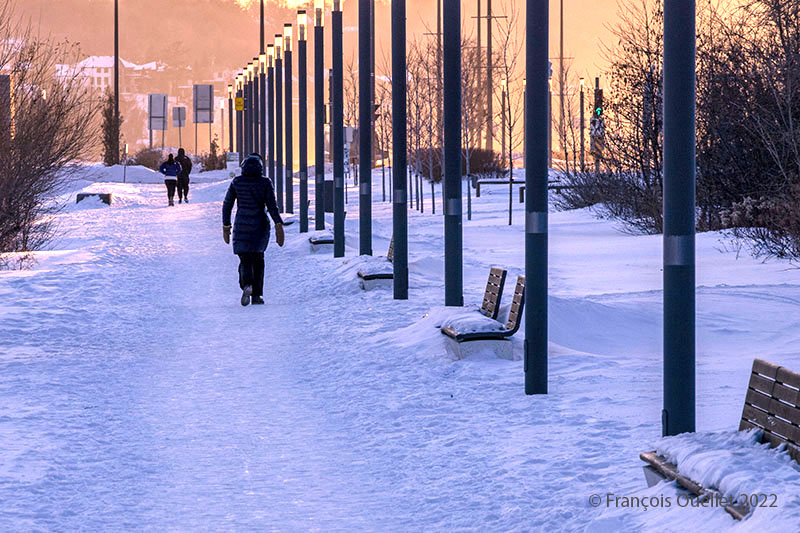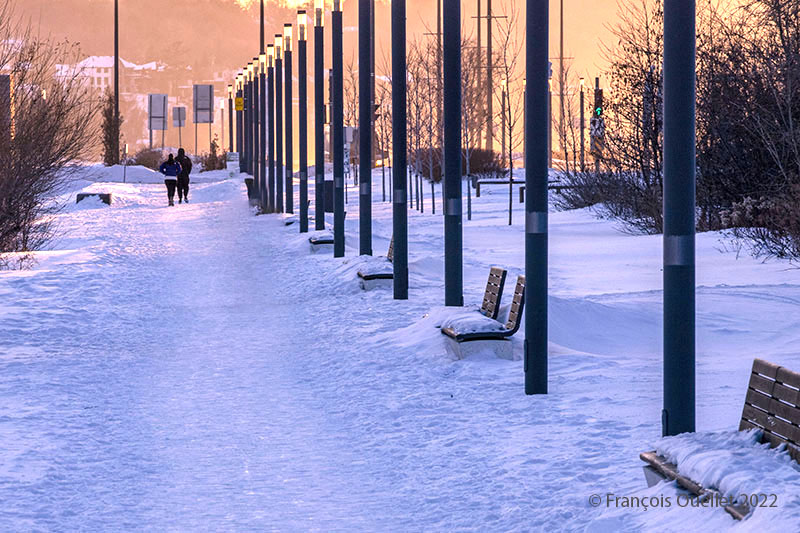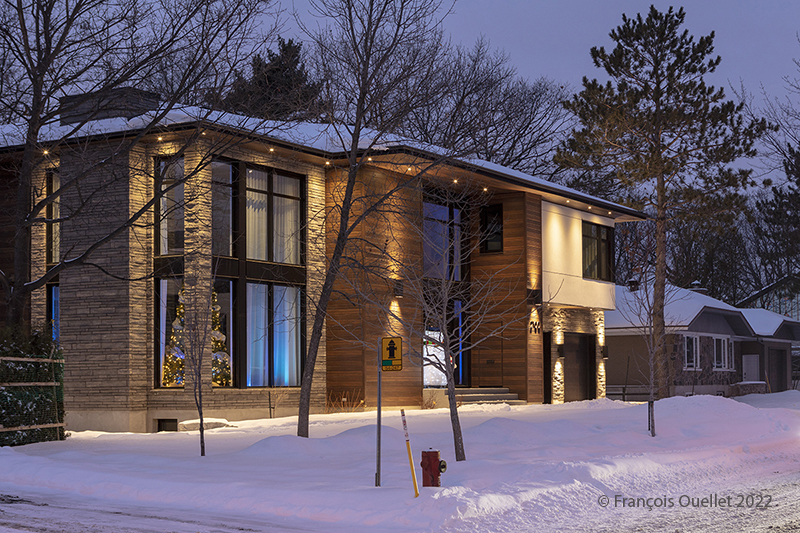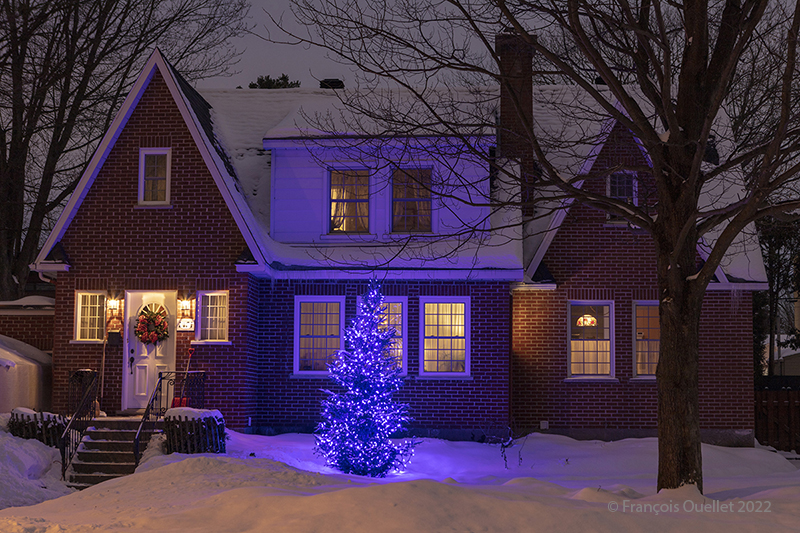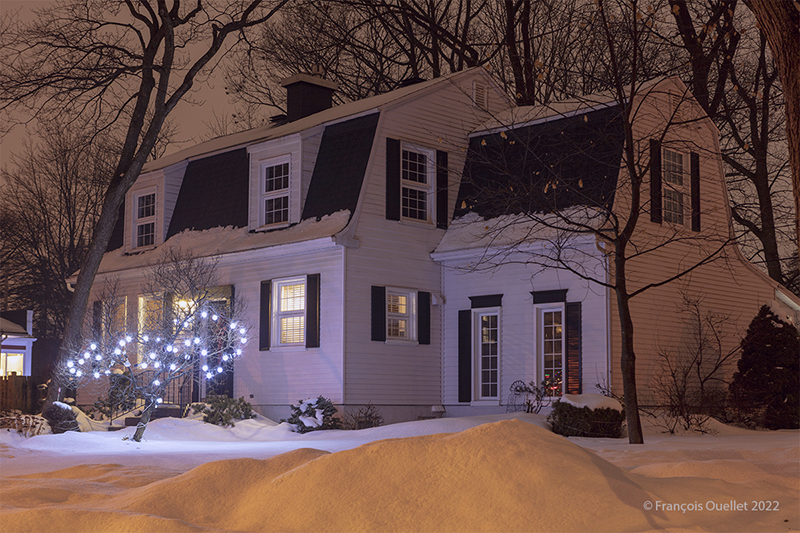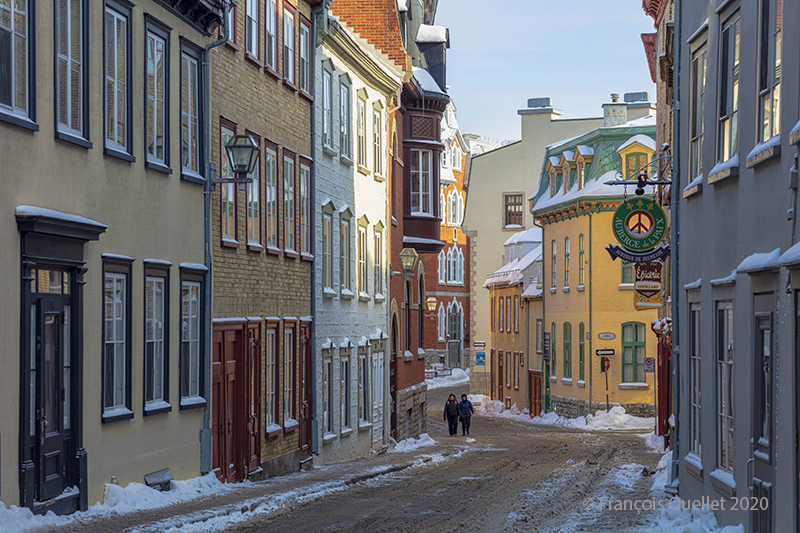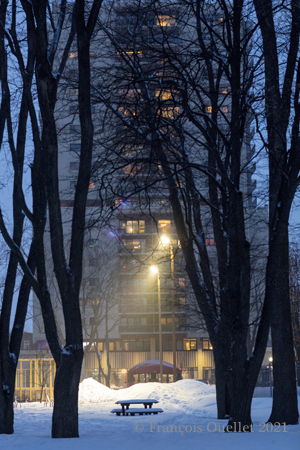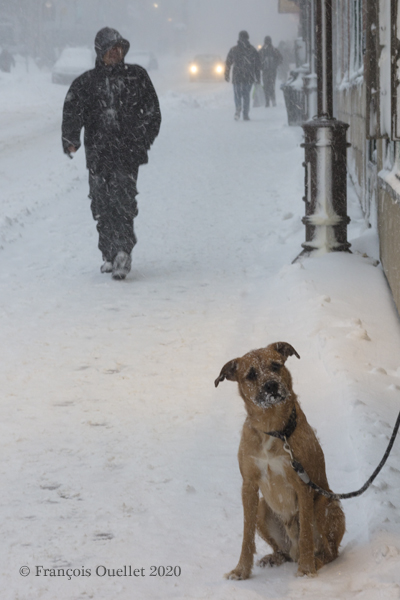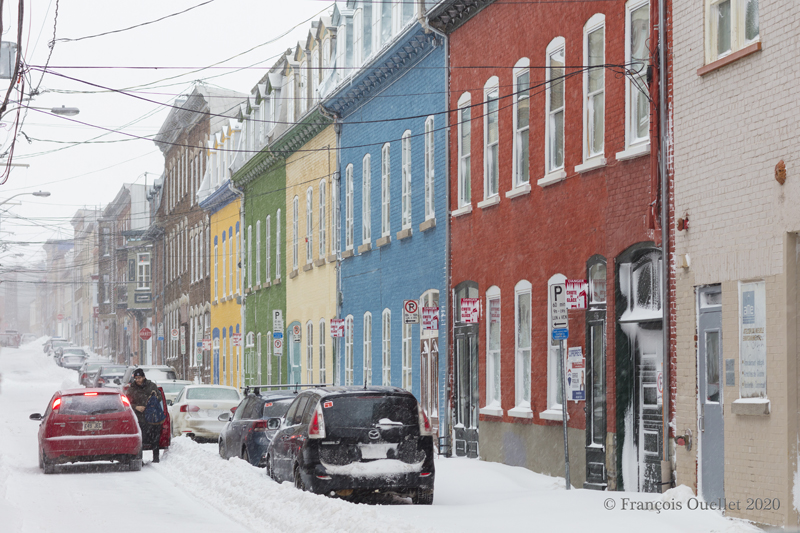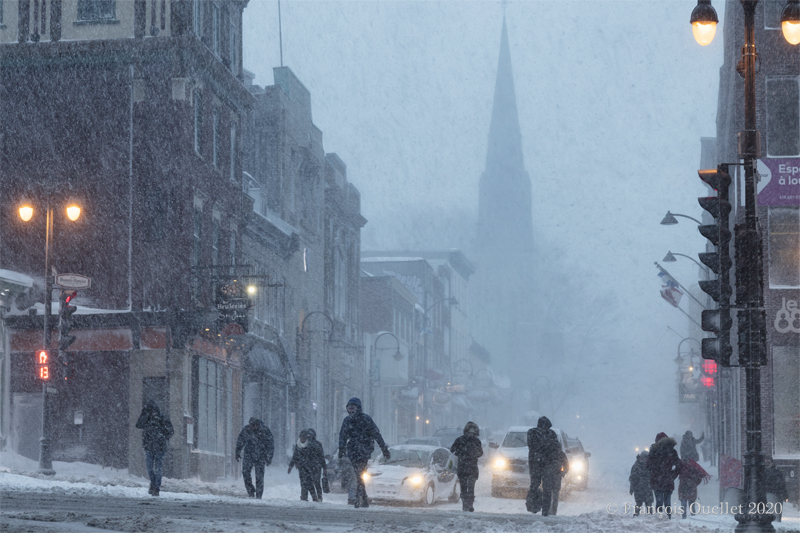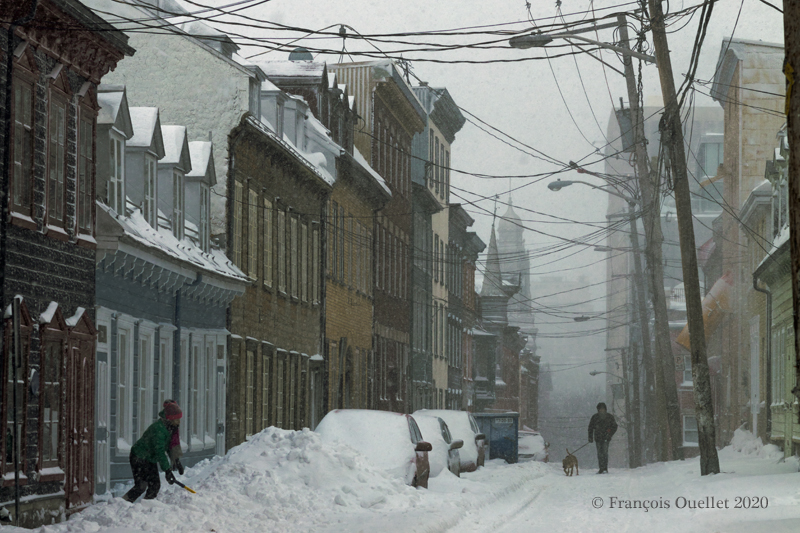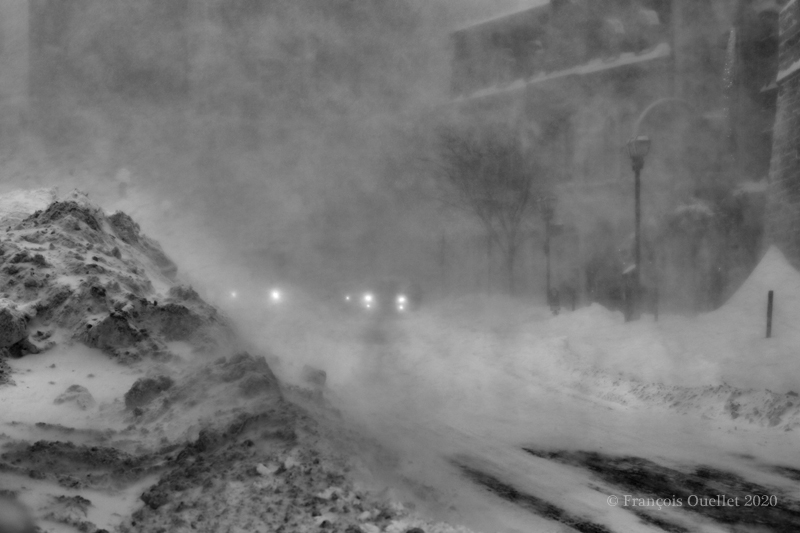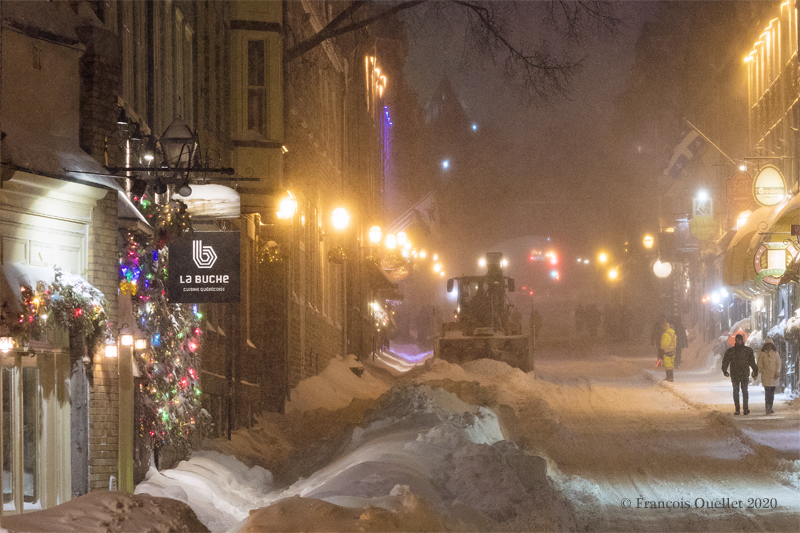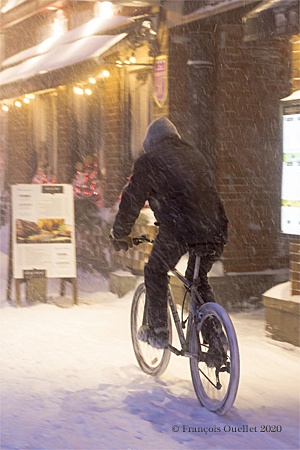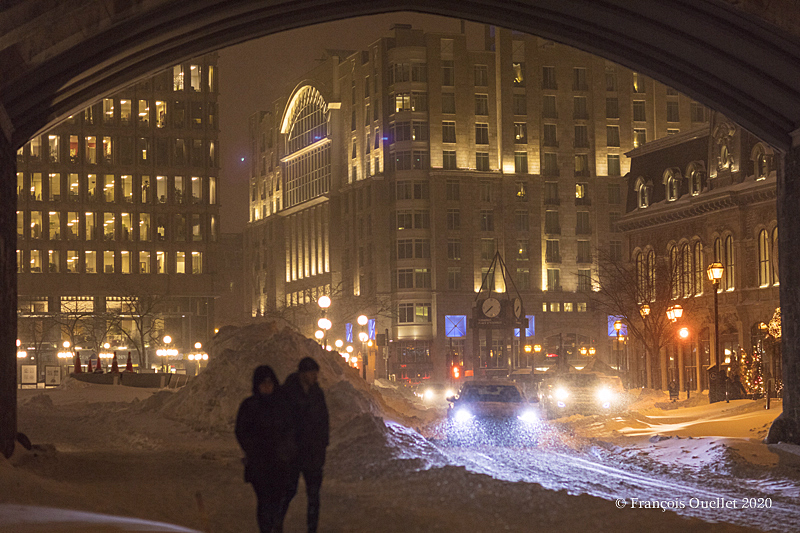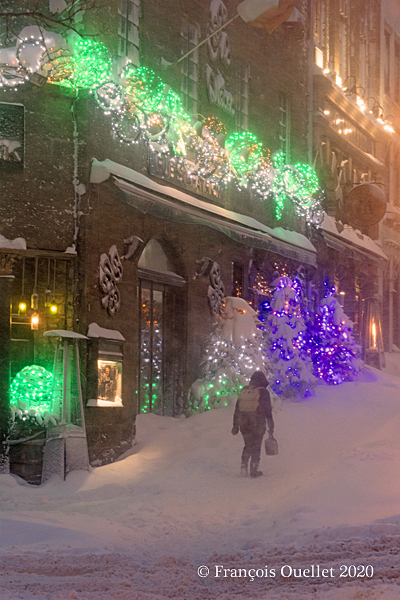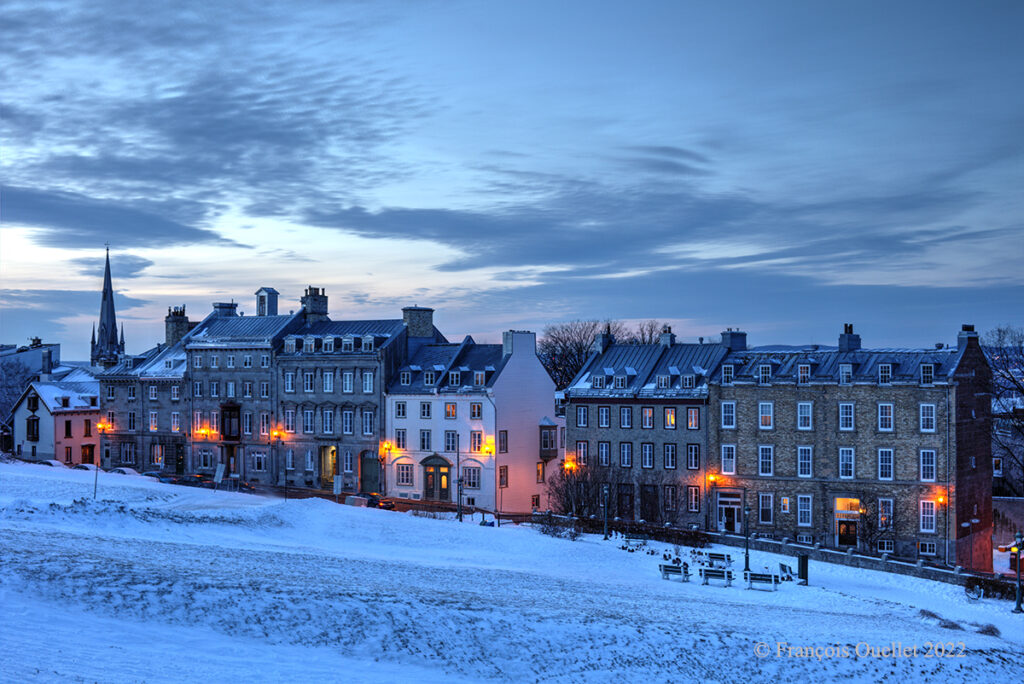
I took this picture of the houses in Old Quebec one day before the great storm of December 23, 2022 that left hundreds of thousands of Quebecers without electricity. At the time the picture was taken, the winds were already blowing pretty hard and the windchill factor was around -20C. The tripod had to be held securely to avoid unnecessary vibrations.
The scene captured during the “blue hour” consists of three photos superimposed in order to obtain an HDR result .
As I finished the shoot, I saw a young couple walking up the snowy slope in the foreground in the photo above. The young man approached me and asked me to make a video of the proposal he was about to make to his girlfriend on his cell phone. She didn’t know anything about it.
He got down on one knee, proposed and she said yes. Then came the ring, the kisses and hugs. Without gloves to hold the cell phone for several minutes, I was hoping for the most concise ceremony possible. A few moments later, half frozen, he came back to get his cell phone. Everything had gone as he had planned. You never know what to expect when you go out for a photo shoot!
Click on the link for more pictures of Old Quebec in Winter.
